Healthcare
New Breast Cancer Technology Reduces Re-excision by 50%
Published
2 years agoon

New Breast Cancer Technology Breakthrough by KUBTEC
Alison and Kim from The Mozart Mission have both survived breast cancer. Their mission was to get the Kubtec Mozart 3D tomosynthesis technology to their nearby hospital. This new breast cancer technology is a precision technology that enables surgeons to know with the highest certainty that they got the entire tumour out during surgery.
Few people understand the havoc and pain involved in breast surgery. But even more concerning is the difficulty of accurately removing all the cancer. 1 in 5 patients have to undergo repeat surgery. However, the breast cancer technology by KUBTEC reduces re-excision rates by 50%.
The women of The Mozart Mission know this. By getting the system into the clinic close to their homes, they have also learned how they can positively impact the lives of millions of women who are going through breast cancer.
Why is Precision Surgery Important for Breast Cancer Treatment?
Precision technology like the MOZART systems gives a clear 3D view of the surgical margins. The clarity of these margins makes it so that there is a better chance of the surgeon removing all of the cancer. Therefore, a re-excision would not be needed.
When Kim, a widow, first heard she had breast cancer in 2019, her first fear was leaving her children orphaned. She went through a lumpectomy, a procedure undertaken to determine if the breast mass is malignant – and if so, to have the tumour removed.
Unfortunately, it turned out she had positive margins after the surgery. “Positive margins” means the cancerous tissue was not fully removed. Kim eventually healed, but only after undergoing another surgery.
Alison returned to the surgery table 4 times until she completely healed. Positive margins caused Alison to get sick again and again. Carmen from the group says having cancer is an emotional roller-coaster.
Consider how wonderful it would be if these women had not suffered through such difficulties repeatedly, not to mention the savings on the cost of healthcare.
KUBTEC Offers a Solution Using 3-D Technology
KUBTEC has been developing diverse systems to help facilitate real-time 3D tissue examination in hospitals. These incredible breakthroughs in breast cancer technology help surgeons to better prepare for the entire process of detecting and treating breast cancer:
- The KUBTEC Mozart: This system combines 3D tomosynthesis and an HD camera to ensure surgeons get the right margins in the operating room, taking out the guessing work of the surgery.
- The KUBTEC XPERT Systems: This is a specimen radiography system that comes in diverse sizes: The XPERT 20, the XPERT 40, and the XPERT 80. All systems ensure comprehensive imaging of specimens to detect cores and determine clear margins in real-time.
- The KUBTEC proprietary Image Blender: This Combines X-ray and optical images for a thorough review of a tissue specimen.
Why Support Breast Cancer Awareness?
Breast cancer awareness not only funds research that helps develop breast cancer technology breakthroughs, but it can also save lives.
Each year, 12.5% of new cancer cases are breast cancer, making it the most common cancer in the world. However, the rate of false positives during the diagnosis of breast cancer is 10%. This means 1 in 10 people may undergo painful treatment for a cancer they do not have!
Furthermore, breast cancer can be very aggressive, so time is of the essence. This means early detection plays a considerable role in successful treatment, not to mention a vital role in prevention.
To fund more research and raise awareness of both the prevention and treatment of breast cancer, we celebrate “Pink October”, known as World Breast Cancer Month every year. Famous celebrities, such as actress Angelina Jolie, who is known for undergoing breast surgery, are important ambassadors in the campaign for early detection and more research funding to improve outcomes.
Numerous support groups run by breast cancer survivors, such as the members of The Mozart Mission, can be found on social media to help patients during their entire painful journey back to health. It is inspiring to discover the strength these women have and their wish to empower other patients to heal.

IC Inspiration
In many cases, patients are required to undergo repeated surgery. In a 6-year-long study, it was found that the rate of repeated breast cancer surgery was 22.7%! Almost a quarter of the patients returned for more surgery.
But how do we avoid the agony of a patient who has already gone through surgery, struggled to heal, and gone back to their normal life after surviving, only to discover the need to go through it all again?
KUBTEC 3D precision technology can be an incredible solution.
The tissue that is removed from breast cancer patients during the actual surgery is only tested in the pathology lab after the surgery has ended. This accounts for the high repeated surgery rate.
Imagine if breast cancer patients and doctors alike could be certain that the entire tumour is removed and that the chance of the cancer coming back is minimal.
Here’s a fun fact: X-rays were used for applications in medicine within a year of their discovery. 3D tomosynthesis takes X-rays to a new level of accuracy.
After all, life happens in 3D, not in 2D. The Mozart system’s efficacy in margin precision for breast cancer patients has improved the lives of so many people. It is truly inspirational, benefiting healthcare professionals and patients alike.
Ofra Kleinberger-Riedrich is an informative content specialist and result oriented content marketer with 15+ years experience in B2B marketing.

Healthcare
Meet AMIE, Google’s Articulate Medical Intelligence Explorer
Published
1 year agoon
17 February 2024
Table of Contents
Articulate Medical Intelligence Explorer (AMIE)
Anyone who has ever had to sit in a waiting room for a long time might appreciate Google’s newest innovation.
Google DeepMind is introducing the Articulate Medical Intelligence Explorer, or AMIE. AMIE is a medical AI assistant that takes a patient’s history and symptoms and determines a diagnosis with incredible accuracy.
According to the subjects who tested AMIE, the AI surpassed real doctors in 24 out of 26 different metrics, including empathy.
How Does Articulate Medical Intelligence Explorer Work?
A patient will tell the medical intelligence explorer what symptoms they’re experiencing. AMIE will take the patient’s history and evaluate the symptoms. After, it will ask a series of questions until it determines a diagnosis. By the time the patient reaches a human doctor, the initial diagnostic conversation will already be done. The doctor will be free to move on to the next step of treating the patient.
The exact nature of the hardware hasn’t yet been revealed. However, Google and DeepMind are promising a user-friendly, text-chat-based experience. It will be available in a wide variety of medical clinics, much like 3D printing in hospitals.
How Does the Articulate Medical Explorer Help Doctors?
Google’s Articulate Medical Intelligence Explorer will streamline the treatment of patients by diagnosing a problem so that the doctor can get straight to the treatment needed.
The conversation between a doctor and a patient is more complicated than one might realize. In one go, doctors need to:
- Have extensive medical knowledge.
- Have the ability to instantly analyze the patient’s responses.
- Pick out the key information that will lead to the next question.
- Diagnose a patient correctly.
That seems like a lot to ask of an AI, but AMIE does it so well, that people hired to test the program have rated it to be as good as a real-life physician. And in some cases, even better.
How Was AMIE Developed?
Google DeepMind’s Articulate Medical Intelligence Explorer, or AMIE, was fed transcripts of almost 100,000 real-life conversations between doctors and patients. As well, they included detailed summaries of notes from intensive care unit cases and thousands of questions from the United States Medical Licensing Examination.
It would take the average human years to absorb that much information and it still wouldn’t be enough. That’s because these kinds of human interactions can be imprecise, full of unnecessary detail, and incomplete.
The research team also developed a continuous cycle of examination and critical analysis to allow AMIE to continue to grow and develop with each interaction.
AMIE Surpassed Doctors in Empathy
Subjects underwent Diagnostic conversations with AMIE. They were not told whether they were talking to a human doctor or articulate medical AI. They were then asked to evaluate their experience on 26 different metrics such as accuracy and efficiency.
The patients rated AMIE over a real-life doctor in 24 out of 26 of those metrics. Amazingly, one of those metrics where the AI system outranked the human doctor, was empathy.
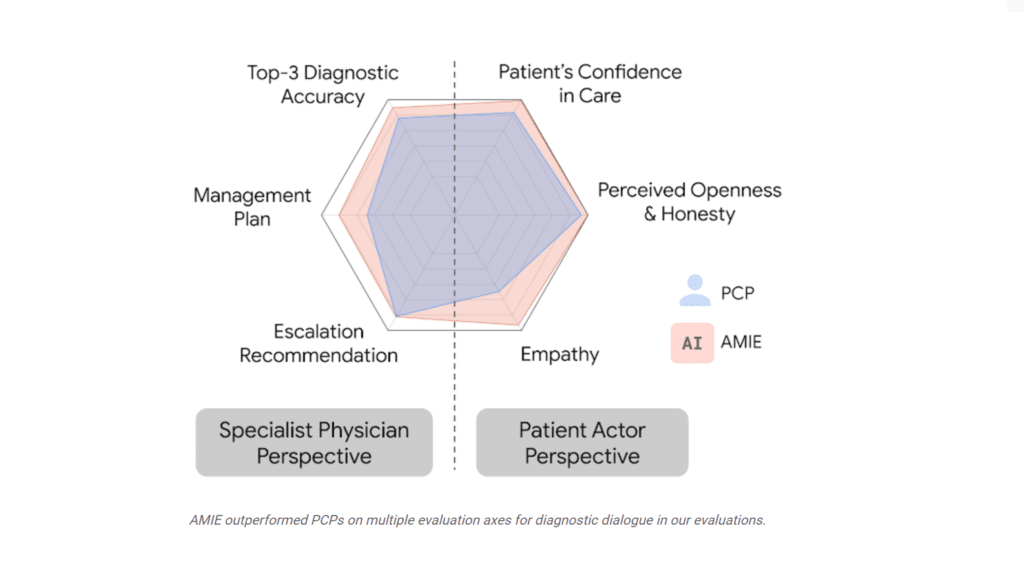
One can only imagine if, in the future, Organoid Intelligence is brought into the mix.
Will Articulate Medical Intelligence Replace Doctors?
While Google’s Medical Explorer was rated higher than real doctors in 24 different metrics, it’s important to understand that Google’s medical AI will only complement the work of human doctors. It won’t be a replacement. No matter how good the AMIE system is, there are things a computer just can’t replace.
Benefits of Articulate Medical Explorer
Google and DeepMind’s Articulate Medical Intelligence Explorer can:
- Reduce patient wait times.
- provide quick and accurate alternatives to in-person care.
- Lead doctors to quicker and more accurate conclusions.
- Provide medical care in remote areas where medical staff is limited.
However, the researchers have not lost sight of AMIE’s limitations.
Cons of Articulate Medical Explorer
Although the Articulate Medical Intelligence Explorer was rated higher than human doctors in 24 different metrics, AI lacks the instinct to handle delicate situations required for issues like ethics. Some cons include the following:
- It may take time for doctors to leave something as important as medical care in the virtual hands of an AI.
- AMIE is limited only to the knowledge fed to it.
- It still needs to be more advanced to provide a diagnosis for complex queries.
It’s safe to say that human medical personnel will be around for a long time to come.
The Future of AMIE
AMIE’s future as a diagnostic tool is incredibly promising. It has the potential to revolutionize the way patients experience healthcare on a global scale.
It’s very important to remember, however, that AMIE is still only at the research stage. There’s plenty more fine-tuning and testing to do. Researchers also recognize the critical importance of moving forward with caution. AMIE might become a common feature in clinics and hospitals in the future.
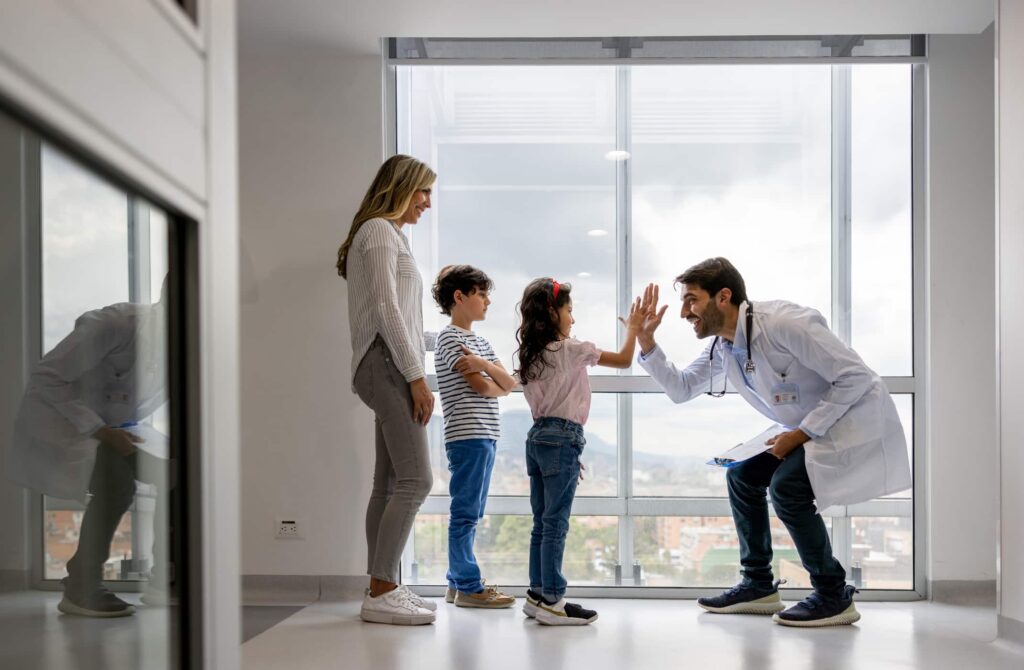
IC Inspiration
Thank goodness for Dr. Kizzmekia Corbett.
If it weren’t for her and her relentless determination, we might all still be locked in our houses hiding behind masks and waiting for the hours to pass.
Anyone who lived through the pandemic years will never forget it. Those few weeks in early 2020 were the worst. That was the time when Covid had officially spread to all corners of the globe, and the World Health Organization (WHO) declared a worldwide pandemic.
We all sat on the edge of our seats, at home, with no idea what to expect. Meanwhile, Dr. Kizzmekia “Kizzy” Corbett-Helaire was locked in her lab with the biggest and most important assignment of her life:
Find a vaccine for COVID-19.
Perhaps the most amazing thing about Kizzy is that she saw this coming. In February 2020, as the first reports of the virus were coming out of Asia, she knew that this had the potential to become a pandemic.
She told PopSugar “I remember sitting my mom on her bed and telling her, ‘I don’t know what’s going on right now, but . . . this is going to be far bigger than we could probably ever imagine,'”
It’s hard to imagine the pressure the doctor felt. She worked 16 to 20 hours a day as news poured in on more and more cases around the world.
“As one of the people who had the only tool out of it, it was so hard to experience. People were dying, and you knew that more people would die if you didn’t hurry and if you didn’t do a great job.”
Talk about a high-pressure task. She was probably more aware than any of us of the number of people losing their lives each day.
Yet, she was also the best person for the task. This was not just because she holds a Ph.D. in microbiology and immunology with expertise in the challenges and benefits of viruses. It was also because of her furious determination to do what she set out to do.
It was a very high-stress situation. It meant being away from her family, church, and her favorite activities.
Somewhere in the middle of the storm, she had a sudden realization.
“I had to protect my spirit or the vaccine would’ve failed, because there is no way that you can do a job of that level without a protected self.”
So, for the sake of a world that was waiting for relief, she started meditating and exercising again.
In November of 2020, Kizzy received the good news everyone had been waiting for. The final test results were in. The vaccine that she and her team had developed was highly effective against the COVID-19 virus.
“I just remember crying,” she says, “All of the trauma was somewhere deep down, suppressed really, and the relief of the trial results just let it all come out.”
Healthcare
3 Mind-blowing Benefits of Viruses You Should Know
Published
1 year agoon
4 February 2024
How Many Viruses are in the Human Body?
There are approximately 10 Trillion viruses in a single human body. That is 10x the amount of money lost yearly from food waste in the U.S. alone.
You’d think that you would be very sick or even dead, right?
Wrong!
It turns out that viruses aren’t entirely the super villains they’ve been painted to be; there are benefits of viruses that often go unnoticed, but which play an important role in our healthcare.
For years, news has been focused on the disease-causing side of viruses, but the disease-preventing side of viruses are playing a crucial role in the world today. This role will become even bigger with advances in AI and Organoid Intelligence.
Here are 3 mind-blowing benefits of viruses that you should know!
Viruses Help Cure Cancer
Cancer cells don’t have strong antiviral defences, making them vulnerable to infections. Viral infections can sometimes lead to certain cancers. For instance, HPV (Human Papillomavirus) is implicated to cause cervical cancer.
On the other hand, this means that viruses can also kill cancer cells. If they are used by researchers to specifically target these cancer cells, then viruses can even help cure cancer.
While the benefits of viruses include killing cancer cells, the only problem is that these viruses can also kill healthy cells in the process.
How Can Viruses Cure Cancer?
Oncolytic viruses (OVs) are viruses that kill tumors. While Oncolytic viruses can be found in nature, they are also modified by scientists to attack tumours without harming healthy cells.
Oncolytic viruse therapy is a cancer treatment that uses OVs to target cancer cells over healthy cells. It does this by activating a ‘danger signals” that makes tumours less immune to viruses.
The result is an effective treatment that can help viruses cure cancer.
Viruses Treat Genetic Disorders
Among the benefits of viruses is that they treat genetic disorders. Viruses are very good at delivering genetic materials into cells, which make them useful for gene therapy. Scientists have developed what are called “viral vectors”. Viral vectors are tools that use modified viruses to transport a functional gene to cells that need them. When the cells receive these genes, they begin to function properly and could be used to treat genetic disorders.
How do Viruses Help With Gene Therapy?
Before a virus is used as a viral vector, it is “defanged”. Like the name suggests, to defang means to remove the part of something that could be dangerous. By defanging a virus and using it as a vehicle to deliver genes to cells, viruses can treat genetic disorders in ways that do not harm the cells.
Among the genetic disorders that viruses can help treat are sickle cell disease (SCD) and Leber congenital amaurosis (LSA).
- Sickle cell disease (SCD): SCD is a disorder where hemoglobin is defective in red blood cells. Hemoglobin is used to deliver oxygen to the blood. With SCD, hemoglobin molecules stick together, causing a variety of serious issues. By using viruses in gene therapy, a modified hemoglobin gene is delivered to the red blood cells as treatment.
- Leber congenital amaurosis (LSA): LSA is a rare and inherited eye disease that causes vision loss early in life. Virus vectors have been shown to be successful in reversing the retinal diseases. One such case was Carlene Knight, who began to see colours again after treatment.
Viruses Create Vaccines
Viruses are often used to create vaccines. Vaccines contain weakened forms of the virus they hope to prevent. By giving someone a vaccine with a weakened form of a virus, an immune response is triggered without the person receiving the disease. This trigger will allow the body to learn how to fight off the infection without overreacting. The result is that when the immune system comes into contact with the virus again, it is prepared to destroy the virus quickly and efficiently.
The most clear benefits of viruses to humans can be found by looking at the chickenpox vaccine. The chicken pox vaccine was created by Dr. Michiaki Takahashi in the 1970s and uses a weakened form of varicella virus. The vaccine has since saved millions of people.
The Benefits of Viruses in the Future
The human microbiome is a community of microorganisms that live in our body. Your body is a superorganism that includes cells that cohabit with fungi, bacteria, and, most abundant of all, viruses. However, until a decade ago, scientists didn’t know much about the human virome — the viruses that inhabit us.
Today, they’ve barely scratched the surface, but at least they understand that the virome is a critical part of your microbiome. Virus benefits can be found in every corner you check. You’ve got viruses on your skin, mouth, blood, lungs; everywhere.
Mohammadsharif Tabebordbar is among the scientists dedicating his life to studying the benefits of viruses to humans. He even led the creation of an experimental gene therapy that treats genetic muscle disorders.
“When I hear the word virus, I’m not scared anymore,” Tabebordbar aptly told the Harvard Medicine Magazine. “I ask, ‘Okay, what type of virus? What does it do? What are the implications?'”
Viruses are crucial to our survival. They support much of life on our planet, and without viruses, life on Earth as we know it would cease to exist.

IC INSPIRATION
For a millennia, humans have been plagued with diseases.
Polio was the most feared disease for thousands of years because those who survived faced lifelong consequences. Polio had spread worldwide, paralyzing over 350,000 people annually.
Then, in 1955, US Physician Jonas Salk successfully created the first inactivated poliovirus vaccine (IPV). He first tested it on himself and his family, and later, it was used on 1.6 million kids in the US, Canada, and Finland.
Six pharmaceutical companies were licensed to produce IPV, but Salk didn’t profit from sharing his discovery with pharmaceutical companies. He understood that to help humanity, the polio vaccine had to be low or no-cost.
In an CBS television interview in 1955, he was asked who owned the patent for polio’s IPV (inactivated polio vaccine), and his answer was heartwarming:
“Well, the people, I would say. There is no patent. Could you patent the sun?”
A few years after Salk’s IPV, Albert Sabin, a Polish-American medical researcher, developed the oral polio vaccine (OPV). OPVs have significantly eradicated polio in almost every corner of the world.
The creation of the poliovirus vaccines is a wonderful historical example of the benefits of viruses and of the dedication of medical researchers. With every passing day there is growing potential of using viruses to deliver vaccines, treat illnesses, and diagnose infections.
Healthcare
Smart Cane Revolutionizes Blind Navigation Like Never Before
Published
1 year agoon
26 January 2024
The Smart Cane: A Guiding Light for the Blind
Artificial Intelligence is all the buzz recently, and for good reason. Its application has included turning thoughts into text, and it will even be used to learn the “flying habits” of those who have pre-ordered the Doroni H1 flying car. For the past few years now, AI has also been used to help the visually impaired with the creation of the smart cane.
Smart canes revolutionize the ordinary white cane by using Artificial Intelligence to help the visually like never before. These canes can help the visually impaired detect objects by using flash memory, ultrasonic sensors, and touchpads. It can even inform the user when the next bus will arrive.
An estimated 250 million people are living with vision loss around the world, and smart cane technology could not have come at a better time.
The History of the Smart Cane
The traditional white cane was developed in the 1920s by James Biggs, an artist who had lost his vision in an accident. To protect himself from traffic he couldn’t see, he painted his walking stick white. This alerted drivers to where he was, and it quickly became a universal symbol for blind or visually impaired pedestrians.
Over a century later, the design remains virtually unchanged.
However, with the introduction of smart cane technology, change is happening. This exciting new revolution will make the world a safer and more welcoming place for those who live with vision loss.
Smart Cane Pioneer Riya Karumanch
One of the pioneers of the smart cane was a fourteen-year-old girl entrepreneur.
In 2018, Riya Karumanch was a ninth-grade student when she saw the need for a new device for the blind. The inspiration came to her as she observed her friend’s grandmother walk into furniture and other objects while trying to navigate with her traditional white cane.
This young lady noted that the traditional cane makes left-to-right sweeping motions across the floor which allows the user to detect anything on the floor level, such as a carpet. However, anything higher than that, such as a dining table, is beyond the standard cane, making it easy for the user to walk into it.
Riya Karumanch did a great deal of useful work raising awareness of the shortcomings of the white cane and researching how to use artificial intelligence to create a better option.
At around the same time, an organization called WeWALK had also been working on creating smart cane technology, and they have become very successful in doing so.
Kursat Ceylan: Founder of WeWalk
Kursat Ceylan, WeWALK co-founder, is intimately familiar with the needs of the blind. Kursat was born without sight. He has scars on his head from the multiple times he’s walked into low-hanging branches and other things his traditional cane could not detect.
So, he founded WeWALK and developed the WeWalk smart cane.
How Does Smart Cane Work?
The WeWALK smart cane technology comes in the form of a handle that can be attached to any standard cane. The smart handle combines several different forms of technology that can be activated using an app. The many features of the smart handle meet the various challenges of those with visual impairments.
Smart Cane Specs
- Ultrasonic Sensor: Smart canes use an ultrasonic sensor to detect objects above floor level and alert the user to avoid trips and falls. It uses artificial intelligence to calculate the exact location of the object. It then vibrates to alert the user of an object.
- Google Maps Integration: The WeWALK app is directly integrated with Google Maps to provide verbal, step-by-step directions to any given location.
- Bluetooth Smartphone App The cane can be paired with smartphones. It also includes a feature for finding the cane when it’s out of reach.
- Voice control: Voice recognition technology makes it easy to access the cane’s features with simple verbal commands. A verbal request to go to the grocery store will signal the cane to find and provide the directions to get there.
- Public Transportation: A verbal request will also allow the user to find out where to catch the next bus and when it will arrive.
Smart Canes Will Make Lives Better
Blindness and visual impairment create limited mobility and options. Even a stroll through the local park can be hard.
Smart cane technology will help to turn that all around. It will provide those who need it with a new freedom to experience the world around them in ways not possible before. It will allow them to go to appointments on their own without having to wait for a ride or companion. They will be able to explore their neighborhoods and even travel with more independence and safety than ever before.
Most importantly, though, it will bring equality and inclusion.
Jean Marc Feghali is the head of research and development at WeWALK.
“There is a big psychological part in this,” he points out on the FreeThink news website, “The psychological part starts with a bad experience or lack of mobility. It ultimately leads to disadvantages in society as a whole and a more segregated society, which is why we at WeWALK have actually focused our efforts on bringing the visually impaired into the 21st century, giving everyone an equal playing field.”
The Smart Cane Technology promises a brighter future for the blind or visually impaired.
What is the Future of Smart Cane Technology?
Smart Cane companies like WeWALK make their data openly accessible to other scientists and researchers. This information will result in the future development of better applications and technology for the visually impaired. This shared data will be used to continue to improve and grow smart cane technology.
Open Access AI is Becoming a Wonderful Blessing
Many companies are making their AI technology open access simply to provide help and benefits to those who need it. One such case is Iterate.ai, a tech company that provides a free AI weapon detection app for non-profit organizations.
WeWalk had this to say on their website:
“We want everyone in the visually impaired community to experience better mobility. So, even if you don’t own a WeWALK Smart Cane, you can still access our advanced navigation and exploration features by downloading the WeWALK smartphone app, available for iOS and Android.”
For the smart cane, we can foresee applications beyond the use of a cane. One day, the data collected could even influence the design of city infrastructure to make life better for everyone.

IC Inspiration
For generations, blindness was perceived as a barrier to most activities.
There are people, however, who refuse to let lack of vision get in their way. They are determined to experience anything anyone else can.
Then some go way beyond that.
Erik Weihenmayer lost his vision as a teenager to a condition called retinoschisis nut he refused to be left on the sidelines.
In 2001, he became the first person ever to climb to the summit of the famous Mt. Everest, something most of us will never do.
He wouldn’t dream of stopping there. He’s made difficult climbs all over the world, including each of the highest points on every continent in the world. He is one of only 150 climbers in history to accomplish this feat.
He’s written books about his adventures and made a name for himself as one of the most exciting and inspiring speakers in the world.
Most importantly, though, he’s sharing his incredible spirit with the world. He’s spearheading an organization called “No Barriers”. Its mission is to help all of us face whatever challenges we have with his kind of courage and optimism. He lives what he calls a “No Barriers” life and he wants to help others do the same.
Erik gives inspirational talks, provides educational materials, and offers scholarships.
Erik’s message is not limited to his blindness. He speaks to all of us when he says:
“I think this is the best time in history, the most precious time in history to be a pioneer, to reach out, to seize hold of adversity and challenges we face, to harness energy not only to transform our own lives but to elevate the world around us.”

The Largest Body of Water in the Universe is Floating in Space. Can We Use It?

The Humane AI Pin is Here! So is Everything You Need to Know

3D Printing in Hospitals Has Saved Children’s Lives

Alef Model A Flying Car Pre-Orders Surge to a Whopping 2,850

Michelin Uptis: Airless Car Tires Emerging in 2024

Dire Wolf De-extinction: The Science Behind it and What’s Coming Back Next

How Do I Become an Entrepreneur? The 5-Step Guide No One Tells You About

10 Facts About Stars That Will Absolutely Blow Your Mind

January Brain Exists, But You Can Beat the Winter Blues. Here’s How

Upside-Down Trains? Why We Should Be Seeing More of Them!
Trending
-

 Science2 years ago
Science2 years agoThe Largest Body of Water in the Universe is Floating in Space. Can We Use It?
-
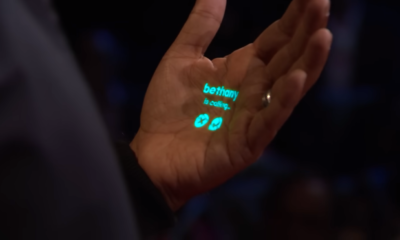
 Technology2 years ago
Technology2 years agoThe Humane AI Pin is Here! So is Everything You Need to Know
-

 Healthcare2 years ago
Healthcare2 years ago3D Printing in Hospitals Has Saved Children’s Lives
-
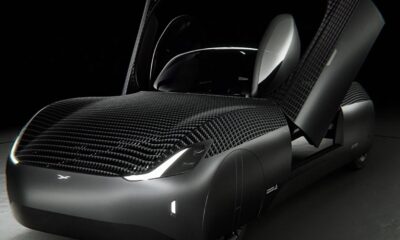
 Technology1 year ago
Technology1 year agoAlef Model A Flying Car Pre-Orders Surge to a Whopping 2,850
-

 Technology2 years ago
Technology2 years agoMichelin Uptis: Airless Car Tires Emerging in 2024
-

 Sustainability2 years ago
Sustainability2 years agoTeamSeas Uses Gigantic Robot to Battle Plastic Pollution
-
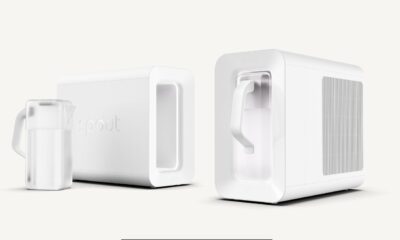
 Technology2 years ago
Technology2 years agoNew Atmospheric Water Generator Can Save Millions of Lives
-

 Sustainability1 year ago
Sustainability1 year agoArchangel Ancient Tree Archive: Cloning Ancient Trees to Build Strong Forests

